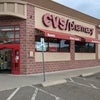Condos grab bigger share of the shelter market
Buyers and developers are finding more reasons to go condo
Last August, 57-year-old Linda Sanborn and her husband bought a condominium in Forest Edge at Sutton because they were tired of the mowing, shoveling and other outdoor chores at their single-family Colonial in Hopedale. With their only daughter grown with children of her own, the Sanborns wanted the more carefree and economical lifestyle of a condo. They certainly weren’t alone.
The Massachusetts Association of Realtors reports that one in every three homebuyers in Massachusetts in 2005 opted to buy a condo. In a cooling real estate market that saw single-family homes sales slip by 3.2 percent, condo sales climbed 16.4 percent to a record 23,026 units.But as a real estate market correction merges with the usual seasonal slowdown in these first months of 2006, real estate experts offer varying outlooks on how the condo market will fare in the months ahead. Most say it’s become more of a buyers’ market for condos. Some even suggest a condo glut may be on its way in some areas as a steady stream of building conversions and renovations add to supply. Others theorize we are just an upbeat spring away from a shortage.
Overall, however, they expect the condo will continue to gain popularity.
"I believe that they’re the wave of the future," says real estate broker and condo specialist Carolyn Kamuda of Gardener. But, she adds, "I think the market has gone past the top."
Catching first- and last-time buyers
Those selling condo projects across the region say they aren’t worried. For one thing, the condo market is benefiting from popularity at both ends of the homebuyer spectrum. Younger, first-time homebuyers find condos a more affordable alternative to the traditional single-family home, which hit a state median price of $360,000 in 2005. And a burgeoning number of baby boomers and empty nesters, like the Sanborns, want to trade single families for the less demanding condo lifestyle.
Milford-based builder Jonathan Bruce says his 84-unit Forest Edge development, set on 92 acres in Sutton, has drawn more buyers than his two-man company can keep up with. So much so, that he stopped marketing the development in the spring and summer of 2005 to build out the 15 units he had sold since August of ‘04. Since putting the project back on the market last November, he has sold three more.
Units at Forest Edge range from $330,000 to $340,000 for 2,100 to 2,300 square feet of space plus a two-car garage. That was a big attraction for the Sanborns, who had looked for six months within a 30-mile radius of Hopedale. Linda Sanborn, who wanted to buy a new unit, says she found mostly 55-and-over condos "priced way over our heads."
Forest Ridge was really the only project they could afford that met their criteria, says Sanford, a registered nurse. Among the key features she cites: quality construction, the wooded setting and a first-floor bedroom that would accommodate her and her husband, a machinist, as they grow older. The Sanborns were among 10 buyers to view the unit on a single weekend last August.
Besides keeping units at what he sees as an affordable market-rate price, Bruce set aside five units at Forest Edge as affordable under a Town of Sutton provision that gave him a 15 percent increase in unit density in return. Those units will sell for $160,000 to $170,000.
Across Rte. 146 from Forest Edge, the posh Villas at Pleasant Valley Country Club is tapping a very different condo niche. The two-and—a-half—year-old, 110-unit development —on 75 acres encircling Pleasant Valley Golf Course in Sutton — offers units from $600,000 to more than $1 million. Broker Lynn Congdon notes that the 2,500-to-3,500-square-foot units are selling at the expected rate, with half a dozen remaining out of 41 units in Phase One. While the market has slowed somewhat, she says there is a market for luxury condominiums.
While the Villas aren’t age-restricted, there is a flurry of 55-and-older condo developments springing up across the state and the region in pursuit of the aging baby boomer market. If there is a condo glut on the way, real estate experts say, it’s likely to be in that niche.
But Bill Depietri, president of Capital Group Properties in Southboro, says the 55+ projects he’s marketing aren’t feeling any strain. The 47-unit Deerfield Estate in Hopkinton, with prices of $400,000 to $500,000, is 50 percent sold. And since completion last summer, Victory Hills in Southboro has sold all but 2 of its 40 units, which are priced at $600,000.
Flocking to the converted
Conversion of older buildings into condominiums is a trend that has gained momentum in recent years from the Worcester area to Metrowest.
The Residences at Dennison Triangle in downtown Framingham, a former factory being renovated as a residential and commercial complex, has sold 21 of its still unfinished 84 loft residential condos since last June. And that’s without a model unit. Site Director Carol Jordan of Coldwell Banker says customers have tended to be young urban professionals who have been reverse commuting from the Boston area or older "step-down" buyers looking to shed their single-family homes.
The Dennison lofts, slated to include a total of 156 condos eventually, range from $225,000 to $500,000 and average 1,100 square feet. Jordan credits the unique style of the historic building, an on-site parking garage and proximity to commuter trains and highways with snagging buyers while it was still a "gutted building." More than 100 prospects have signed up for the model debut.
Across town, a 180-unit converted apartment complex, called Chapel Hill East Condominiums, is seeing good sales in what Sales Director Scott Johnson terms a cornered market on the niche that is a small step down from the Dennison project. Converted in August of 2004, Chapel Hill has sold some 100 units at $190,000 to $380,000. Buyers range from first-timers in their 20s to retirees in their 80s, Johnson says, with a handful of families mixed in.
Beyond larger-scale conversions, more and more smaller buildings are being converted to condominiums. For building owners, the math is compelling. Nelson Zide of Key Realty points to a 10-unit building on Rte. 126 in Framingham as an example. The owner was initially looking to sell it as an apartment building until Zide suggested condos. One year and some upgrading later, he says, the owner has sold all 10 units, with the final one fetching $225,000.
Worcester has seen a spike in condo conversions of triple deckers as well as mill buildings in the past few years, with hundreds of units reaching the market.
Overall, says Christopher Hajec, owner of Worcester-based real estate broker and developer Hajec and Associates, the condo’s popularity in Massachusetts is following a trend nationwide. Last year, he says, marks the first time that first-time home purchases were split equally between single-family homes and condominiums. He credits a growing acceptance of the concept of condo ownership along with a growing supply of condos at lower prices than single families.
Hajec will begin selling a 10-unit condo project in a portion of a converted 19th century factory building behind Union Station in Worcester called the Heywood Building next month. The 1,200- to 1,500-square-foot lofts are priced at $295,000.
A glut on the horizon?
Spring will likely tell whether there’s now an oversupply of condos in some areas. Kamuda, who is studying the Worcester market, points to Multiple Listing Service data that shows a big jump in condo inventory there. Between Nov. 21 of 2005 and Feb. 21, 2006, the data shows 338 condos listed. That compares with 163 listings for all of 2005. Over in Shrewsbury, Steven Levine RE/Max First Choice counted 78 condos listings in mid-February that amounted to a 10-month supply — well in excess of the 7 1/2- to 8 1/2-month point that the MAR says represents a balance of supply and demand.
While the expanding condo supply gives singles and couples more affordable options, Michael Goodman, director of economic and public policy at the Donahue Institute of the University of Massachusetts, says it doesn’t do much for a key homebuyer segment that is being squeezed by housing prices — families. And, as the state continues to grapple with out-migration to states with a lower cost of living, he paints a bleaker picture of the growing popularity of condos: "The condo as an alternative to the single-family home. It’s a trade off. Those that aren’t leaving are settling."
Micky Baca can be reached at mbaca@wbjournal.com









0 Comments